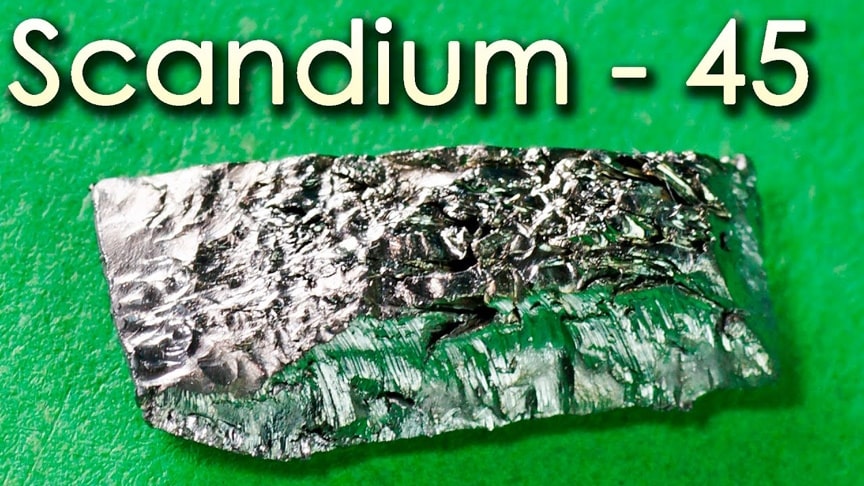So today I will tell you about such metal as scandium. Scandium is a rare earth metal that is located in the 3rd group of the periodic table of chemical elements. You can find about 10 grams of scandium per ton in the earth’s crust, and the richest in scandium rocks are found in Norway and Madagascar.In appearance, scandium is a shiny metal with a yellowish tint due to the scandium oxide layer covering the metal.
source/image: Thoisoi2 – Chemical Experiments!
Because of its rarity and high chemical activity, scandium has a very high price to it. This piece of scandium, weighing 1.3 grams, costs about $40.Its density is 2.98 g / cm3, only by 10% more than that of aluminum. However, the melting point of scandium is much higher (1541 °C.Interestingly enough, scandium chips in a jar when shaked produce a very interesting sound. It is quite resonant, I can assume that this is due to the lightness and hardness of scandium.
By its chemical properties, scandium resembles aluminum and lanthanides. Chips of scandium burn well in the air, and during the combustion you can hear this interesting raspy sound.From the heat of the reaction the produced scandium oxide melts and forms into a ball. If you try to rub scandium into a file, you will not see scandium powder spontaneously igniting in the air.Scandium reacts well with acids, such as the hydrochloric acid.
Advertisement
In this reaction scandium chloride is produced, in many compounds scandium has the oxidation state of +3. Besides acids, scandium can also react with alkali to form skandate – the complex compounds of scandium.By this characteristic scandium is quite similar to aluminum, it has the ability to react with acids and alkalis, which means it’s amphoteric.Scandium finds many uses in the world.Scandium is often used as a dopant for the aluminum alloys, even a simple addition of 0.4% scandium increases the strength of the alloy by 30%./Thoisoi2 – Chemical Experiments!











